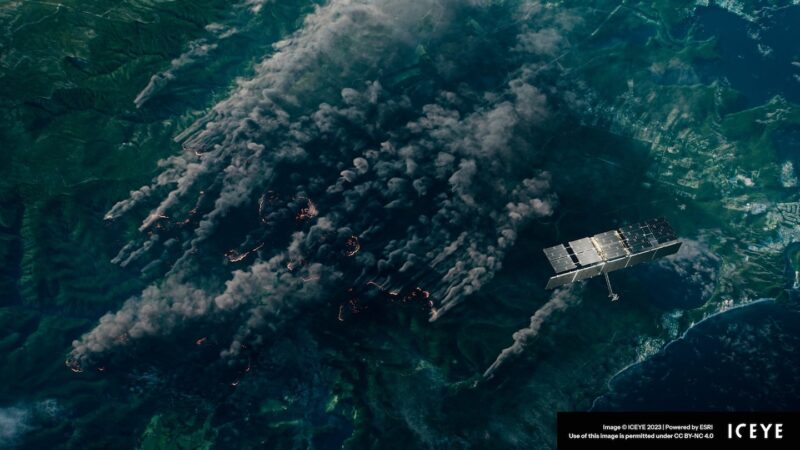Latest News
Government is Behind in Creating a Program of Record for Commercial Satellite Imagery, Iceye US Exec Says

A depiction of an Iceye SAR satellite taking an image through the fire and smoke of wildfires. Credit: Iceye
Commercial satellite radar providers are ready to meet the operational needs of U.S. government users but plans to develop a program of record for these capabilities in fiscal year 2026 are behind in finishing requirements and identifying funding, the U.S. chief for one of these companies said on Wednesday.
Capella Space; a U.S. division of Europe’s Airbus Group; the U.S. division of Finland’s Iceye; and Umbra Lab have had study contracts with the National Reconnaissance Office (NRO) since January 2022 that have been used by the government in response to the Russo-Ukraine War.
Those policies include direction from Congress in the annual defense authorization bill and the White House National Space Council, Jensen said.
This time of the year “is when the rubber meets the road” because the FY’ 26 budget is being put together, he said. “The commercial industry is doing our best to politely and persistently bang on the table and say, ‘So just to remind everybody, policy has dictated that this is done and we’re ready to serve. We’ve proven that it can work and that we address these key needs. Let’s go.’”
Jensen cited two main reasons for why the government has been slow to finish requirements for the commercial radar contract and identify the funding. One is the traditional slowness of the bureaucracy, highlighting that it took about 15 years to establish and award the Electro-Optical Commercial Layer contract that NRO uses to buy commercial EO imagery from Maxar, BlackSky, and Planet Labs.
The other impediment has been “antibodies,” people in government that oppose having commercial companies involved in government work, and other competitors in the broader aerospace and defense industry that want to protect their work with the government, Jensen said.
What cannot be ignored is the fact that the commercial synthetic aperture radar (SAR) satellite industry has invested “over 1 billion dollars and hired thousands of people across the country” and launched more than 50 satellites to create a “powerful” capability for potential customers, he said.
Iceye, which is based in Finland but has extensive operations in the U.S., has 35 satellites on orbit.
Get the latest Via Satellite news!
Subscribe Now